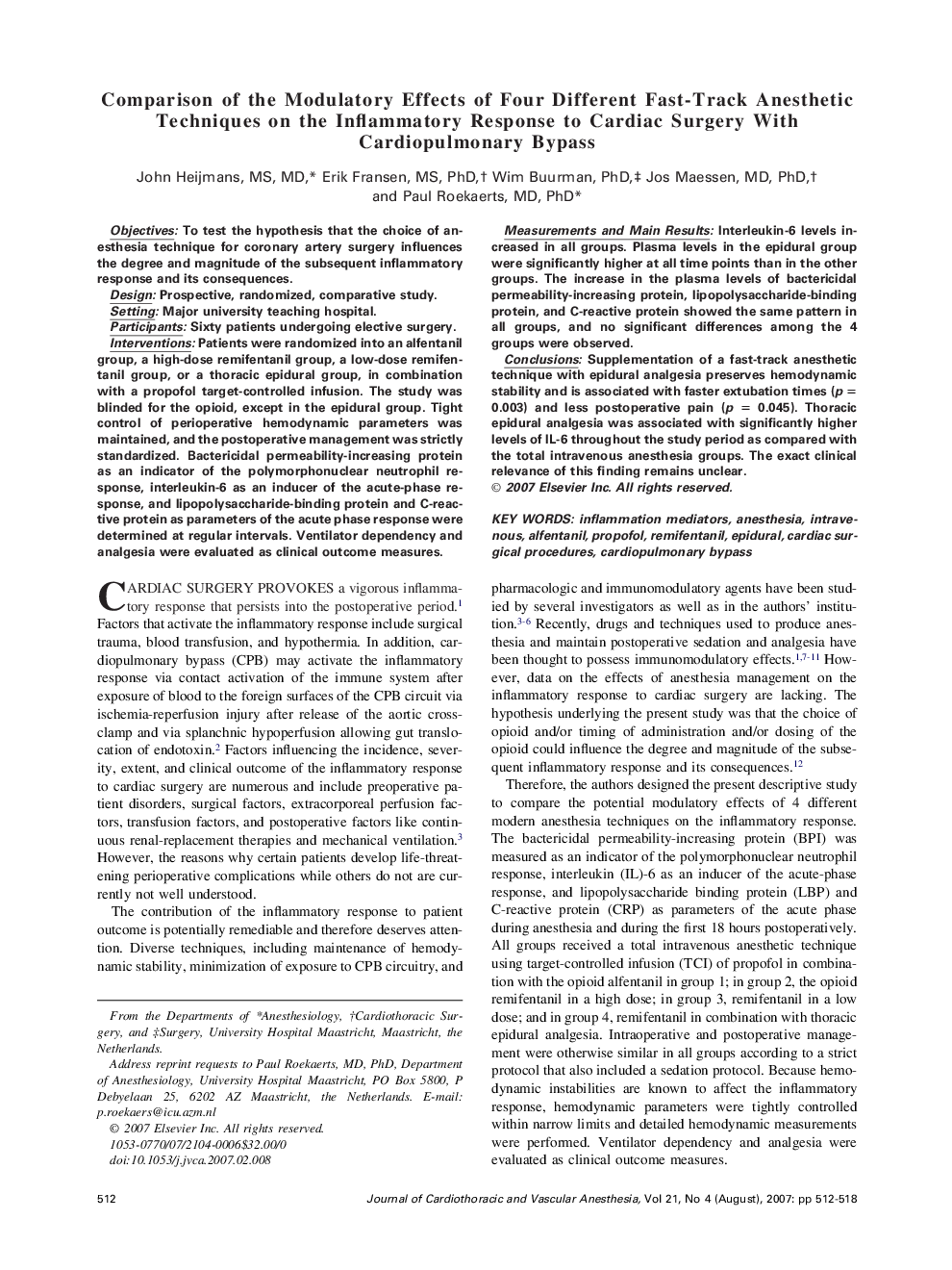| Article ID | Journal | Published Year | Pages | File Type |
|---|---|---|---|---|
| 2761325 | Journal of Cardiothoracic and Vascular Anesthesia | 2007 | 7 Pages |
Objectives: To test the hypothesis that the choice of anesthesia technique for coronary artery surgery influences the degree and magnitude of the subsequent inflammatory response and its consequences.Design: Prospective, randomized, comparative study.Setting: Major university teaching hospital.Participants: Sixty patients undergoing elective surgery.Interventions: Patients were randomized into an alfentanil group, a high-dose remifentanil group, a low-dose remifentanil group, or a thoracic epidural group, in combination with a propofol target-controlled infusion. The study was blinded for the opioid, except in the epidural group. Tight control of perioperative hemodynamic parameters was maintained, and the postoperative management was strictly standardized. Bactericidal permeability-increasing protein as an indicator of the polymorphonuclear neutrophil response, interleukin-6 as an inducer of the acute-phase response, and lipopolysaccharide-binding protein and C-reactive protein as parameters of the acute phase response were determined at regular intervals. Ventilator dependency and analgesia were evaluated as clinical outcome measures.Measurements and Main Results: Interleukin-6 levels increased in all groups. Plasma levels in the epidural group were significantly higher at all time points than in the other groups. The increase in the plasma levels of bactericidal permeability-increasing protein, lipopolysaccharide-binding protein, and C-reactive protein showed the same pattern in all groups, and no significant differences among the 4 groups were observed.Conclusions: Supplementation of a fast-track anesthetic technique with epidural analgesia preserves hemodynamic stability and is associated with faster extubation times (p = 0.003) and less postoperative pain (p = 0.045). Thoracic epidural analgesia was associated with significantly higher levels of IL-6 throughout the study period as compared with the total intravenous anesthesia groups. The exact clinical relevance of this finding remains unclear.
